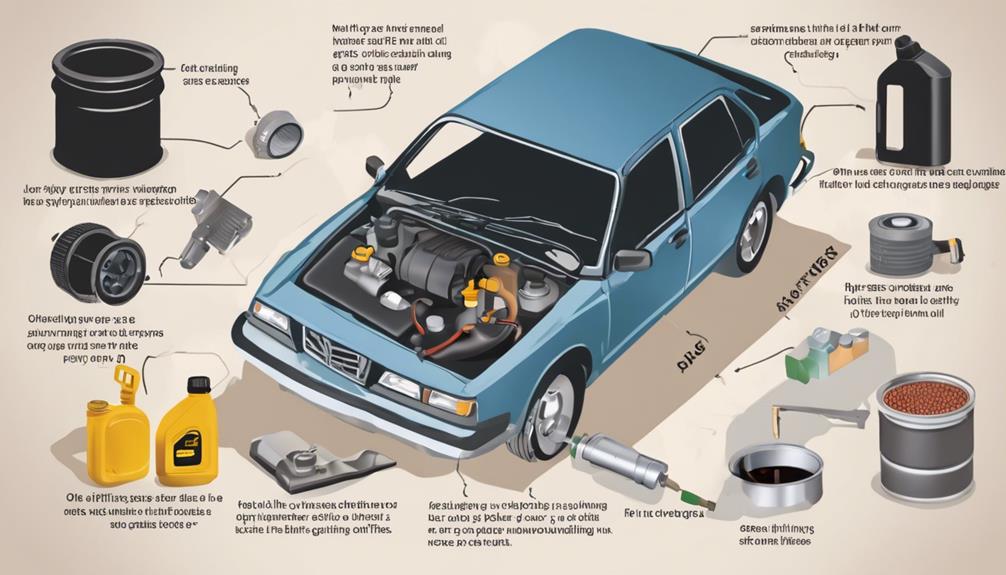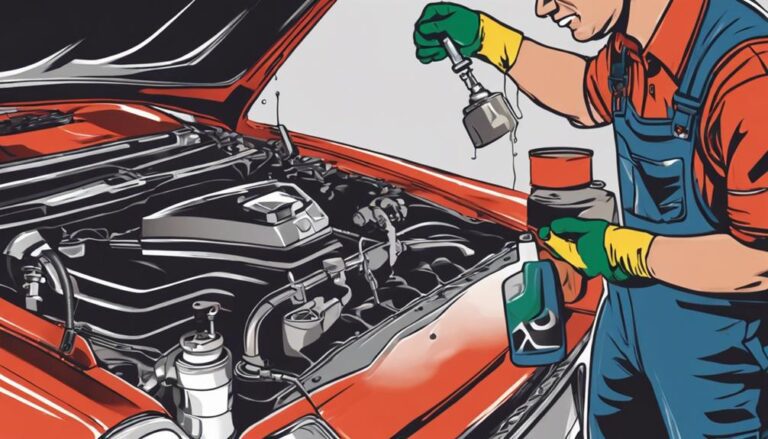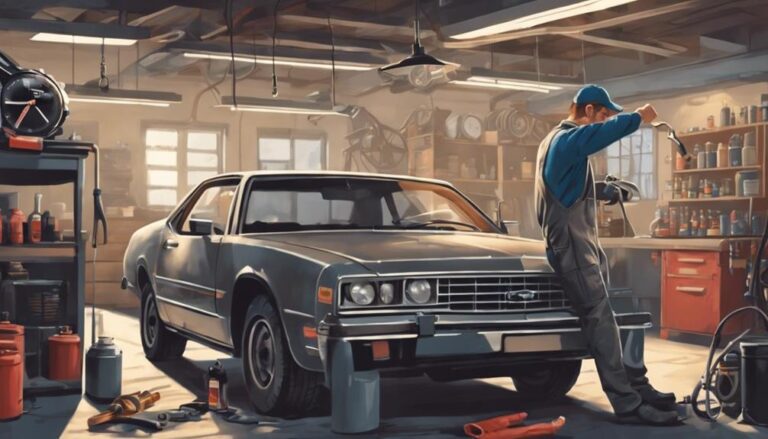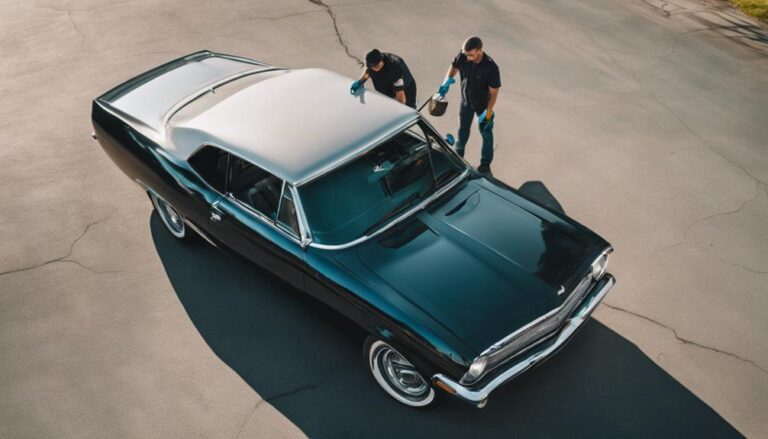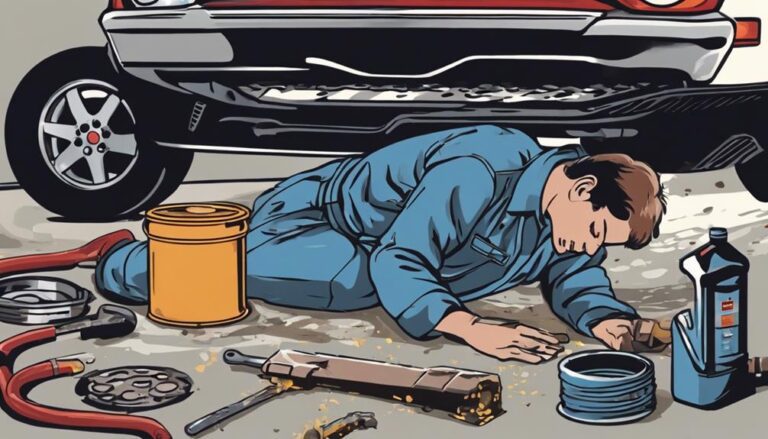Essential Tips for Oil Change and Filter Replacement
Have you ever felt the sinking feeling of realizing you've been neglecting your car's oil change and filter replacement? You're not alone. But fear not, as mastering these essential tasks can save you time, money, and potential headaches down the road.
From understanding the correct oil weight and type to knowing the right safety precautions, each step plays a crucial role in maintaining your vehicle's health. So, let's dive into the world of oil changes and filter replacements to ensure your engine stays purring like a contented feline.
Key Takeaways
- Follow manufacturer guidelines for oil change intervals and filter replacements.
- Select correct oil weight and type to ensure optimal engine performance.
- Use safety gear and precautions for a safe oil change process.
- Allow the vehicle to cool down before starting the oil change for safety and efficiency.
Manufacturer Guidelines
When following manufacturer guidelines for oil changes and filter replacements, refer to the specific intervals recommended for your vehicle model to ensure optimal engine performance and warranty validity. Adhering to these maintenance schedules is crucial for meeting warranty requirements and keeping your engine running smoothly. The manufacturer's recommendations not only dictate when to change the oil but also specify the correct oil type, viscosity, and quantity necessary for your engine's health.
By following the maintenance schedule outlined by the manufacturer, you aren't only maintaining warranty validity but also ensuring that your engine performs at its best. These guidelines are designed to protect your engine from premature wear and potential damage. Additionally, the manufacturer may include information on when to replace the oil filter, which is essential for proper engine protection.
To guarantee your vehicle's engine performance and warranty requirements are met, always consult the manufacturer guidelines for oil changes and filter replacements. Failure to adhere to these recommendations could result in voiding your warranty and compromising your engine's health.
Correct Weight and Type
Select the appropriate oil weight and type meticulously to guarantee peak engine performance and longevity. The oil viscosity is of utmost importance as it directly impacts engine performance.
Using the wrong oil weight can result in poor lubrication, increased wear on engine components, and potential damage. It's crucial to consult your vehicle's manual or follow manufacturer recommendations to determine the specific oil weight and type required for your engine.
Different engines may necessitate varying oil weights based on factors like temperature, driving conditions, and engine design. Choosing the correct oil weight ensures proper lubrication of engine components, promoting smoother operation and overall efficiency.
Neglecting this aspect can have detrimental effects on your engine's performance, potentially leading to costly repairs. By adhering to the recommended oil weight and type, you can optimize engine function and extend its lifespan.
Safety Gear and Precautions
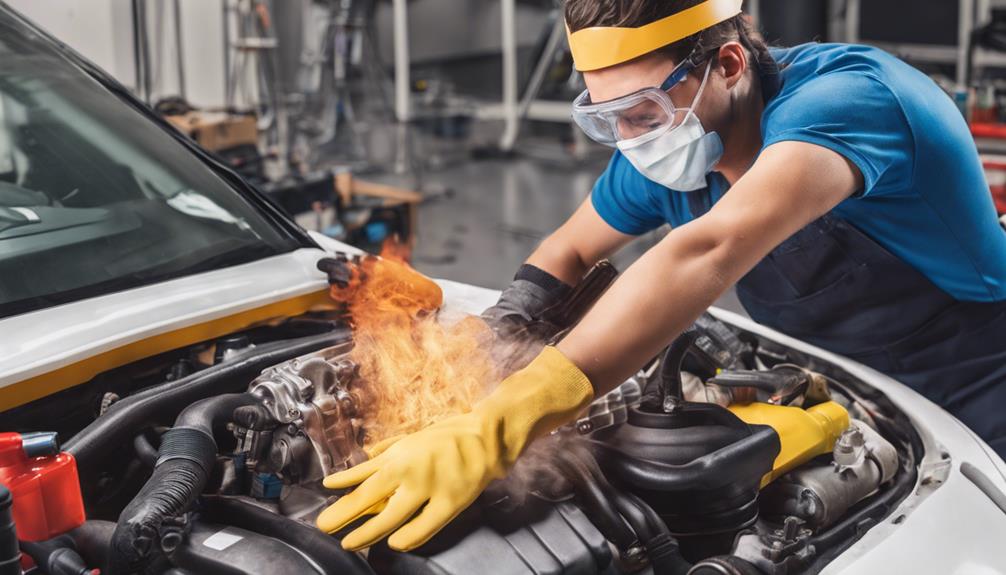
To ensure your safety and the proper execution of an oil change, it's essential to equip yourself with the necessary safety gear and take specific precautions. Here are some crucial tips to keep in mind:
- Wear rubber gloves: Protect your hands from oil and contaminants that may cause skin irritation.
- Use clean towels: Wipe off any spills or drips to prevent slipping hazards in your workspace.
- Allow cooling time: Wait for at least 20-30 minutes for the car to cool down to avoid burns from hot engine components.
- Check manufacturer guidelines: Always refer to the specific safety precautions outlined by the manufacturer before starting the oil change process.
Cooling Down Your Vehicle
Allowing your vehicle to cool down for 20-30 minutes is crucial before initiating the oil change process to ensure safety and ease of maintenance. Cooling down the engine not only prevents burns but also helps facilitate a smoother oil flow during the draining phase.
By letting the car cool, you allow the oil to settle, which makes it simpler to drain and reduces the likelihood of spills or splashes that could cause harm. Hot oil is a safety hazard as it can lead to burns if mishandled.
Moreover, when the engine is hot, the oil tends to flow more rapidly and erratically, making it harder to control during the draining process. Taking the time to cool down your vehicle is a fundamental step in preparing for an oil change, ensuring a safer and more efficient experience.
Proper Drain Pan and Filter Seal
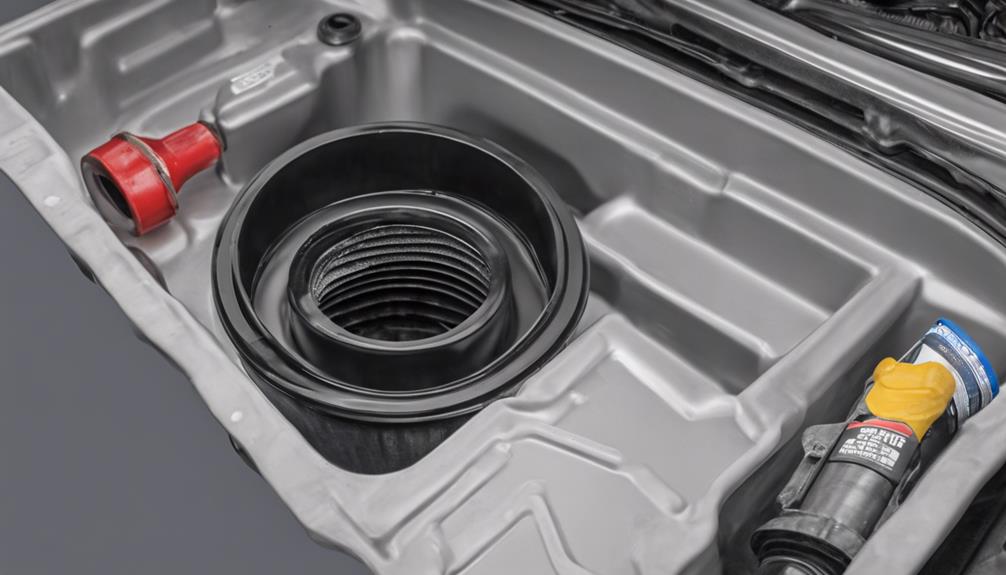
Using a drain pan that fully covers the oil filter is essential to catch any spills or drips during the oil change process. To ensure leak prevention and spill containment, make sure the drain pan has a secure seal to prevent any oil from escaping.
Properly position the drain pan under the oil filter before removing it to collect any residual oil that may drip. Select a drain pan with a suitable capacity to hold the amount of oil that will be drained during the oil change process.
Investing in a quality drain pan with a sturdy construction is crucial to withstand repeated use and handling. By following these steps and using a well-designed drain pan, you can effectively contain any spills or leaks that may occur during the oil change, making the process cleaner and more efficient.
Frequently Asked Questions
Are You Supposed to Tip Oil Change?
You are not required to tip for an oil change. Service expectations don't include tipping in the automotive industry. Mechanics are paid for their work. Express gratitude with a thank you. Tipping is optional and not customary.
What Not to Do When Changing Your Oil?
When changing your oil, common mistakes like using the wrong viscosity or over-tightening the filter can lead to engine damage. Remember to use proper tools and follow manufacturer recommendations for optimal engine health.
How Do I Prepare for an Oil Change?
To prepare for an oil change, gather tools needed like a wrench, oil filter wrench, and oil drain pan. Ensure proper disposal of old oil at a recycling center. Follow manufacturer guidelines and safety precautions.
Is It Necessary to Warm up Engine Before Oil Change?
You should warm up the engine before an oil change. It enhances engine efficiency and temperature impact. Running the engine for 5-10 minutes helps remove more old oil and contaminants, ensuring a thorough and effective oil change process.
Conclusion
After following these essential tips for oil change and filter replacement, your car will purr like a well-oiled machine. Just like a finely tuned instrument, regular maintenance is key to optimal performance.
Remember, neglecting your oil changes is like playing a musical instrument with rusty strings – it may still make noise, but it won't sound as sweet.
Take care of your car, and it will take care of you.

